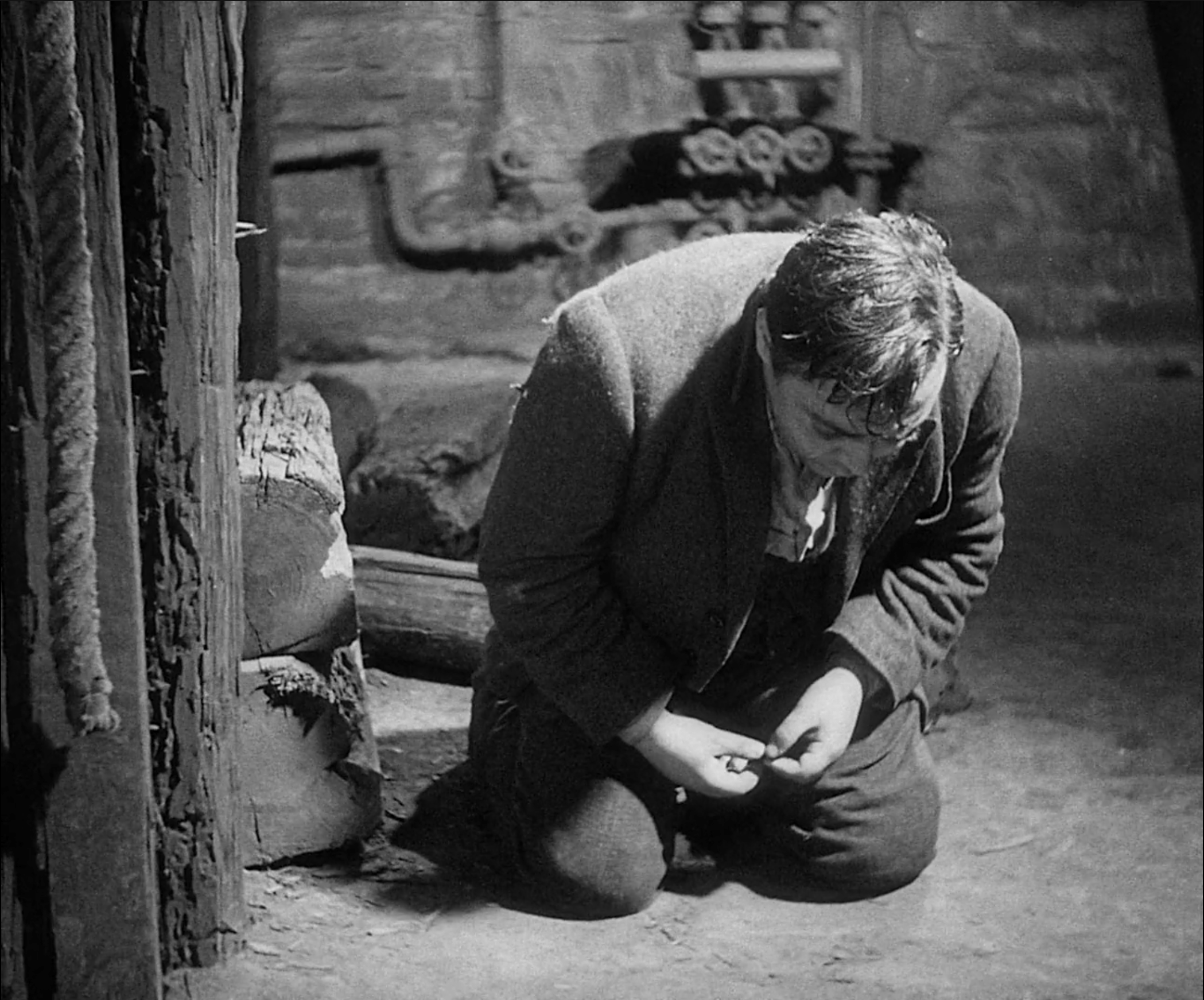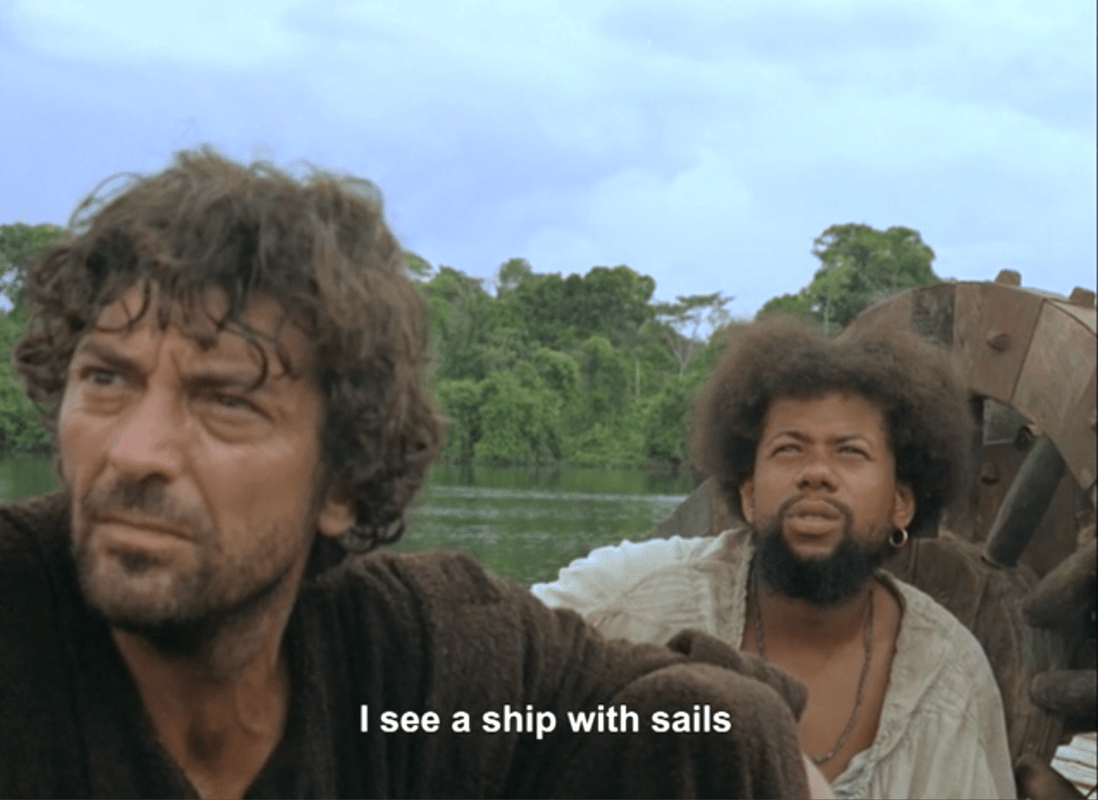
Robert Altman’s 1972 film Images enhances the idea of the subjective camera by compounding it. He creates an unstable space where not only the character’s perceptions are unreliable but our own perceptions of the characters’ perceptions are also unreliable. This disorienting place provides an opportunity to experiment with subjectivity. As Images explores the relationship of the subject to the camera the movie feels like a web of references to the subjective aspects of other films.
Images features many scenes where Katherine, the main character, suddenly sees herself as if she is running into a an acquaintance on the street or an intruder in her house. The audience sees two Katherines on screen and knows that one must be a hallucination. The personal boundary confusion In many ways recalls Ingmar Bergman’s Persona. When, in Images, Katrherine finally confronts her second self it feels like the famous scene in Persona where Elisebet and Alma face each other at a table. First we see their discussion through Elisebat’s eyes and then the scene is played over again through Alma’s eyes.

However Altman, unlike Bergman, does not repeat the scene but instead cuts back and forth and overlaps dialogue in such a way that the audience is not only confused but extremely tense. Katherine’s subjective experience is reflected in the camera but recapitulated in the editing. One Katherine will finish the other Katherine’s sentence confounding our understanding of who is speaking. Of course both the individuals on screen are Katherine. It is a visual dissonance caused by our inability to get outside Katherine’s subjective perception. In Persona,Images and in David Lynch’s Mulholland Drive we see two women where there may only be one. In Images the two women are identical. In Persona and Mulholland Drive we see two different women who begin to look increasingly similar. The inner psychological confusion is manifested visually. The camera depicts the subjective experience in what seems like an objective reality.
David Lynches neonoir trilogy Lost Highway, Mulholland Drive, and Inland Empire, all share resonance with Altman’s Images’. In Inland Empire there is a disorienting scene when the main character, Nikki, finishes talking and the camera wanders over to reveal a movie camera filming her. We realize that what we just watched was a scene being filmed for a movie. Of course it was a scene being filmed for a movie but the audience is lead to believe that the scene is an intrinsic part of the narrative and so we are surprised by it being diagetic. Its a scene in a movie that we thought was a scene in a movie but didn’t realize was a scene in a movie in the movie.

In Images there is a camera on a tripod in the middle of the house. Katherine looks through it, her husband looks through it, we look through it. It is a pivot point for a confluence of the differing points of view. It is also a stand in for the director’s gaze as well as the audience’s gaze. In addition, through Katherine’s hallucinations the camera becomes a stand in for her ex-husband. At one point her ex-husband appears and she shoots him with a shotgun. His chest bursts open and he falls to the ground but then it is revealed that he was an hallucination and it was in fact the camera she shot. This scene has many interesting levels. Susannah York, the actress playing Katherine, shoots the camera symbolically assaulting the director and the audience. She strikes out against us the gazers. What we see is an actress playing a role as she shoots a camera that is also playing a role. The actress and the camera are real, but their roles are not. Within the fiction of the narrative Katherine may or may not be real and the same goes for the camera. The camera is meant to “shoot” the actress but here the actress shoots the camera. The confusion causes us to share Katherine’s self-doubt.
Continuing with the web associations, there are several scenes in Images that are reminiscent of Roman Polanski’s Repulsion. Like Katherine, Carole the protagonist, is trapped by her inability to distinguish fact from fantasy. In Repulsion we watch the slow decay of a dead rabbit on the kitchen table as it mimics Carole’s mental decay. In Images Kathrine, leaves a gruesome corpse of the man she murdered on the living room floor. She steps over his bleeding body as she roams the house sometimes noticing him and sometimes blithely stepping over him like a bump in the rug. We’re not sure if she sees him or not, or whether she understands what he is or not. In Repulsion we are pretty sure that the rabbit is actually there, but in Images we have no idea what is real. We have been tricked too many times to trust what the camera is showing us. We see the body and wonder what Katherine sees, but on top of that we wonder if we can trust what we see.

In trying to separate the subjective from the objective there seem to be hints in Images that we are given that we need to decode. There is something like a talisman, a symbol that appears sporadically throughout the film in different forms. It is a kind of chandelier or wind chime. It sometimes appears hanging from the ceiling or sometimes as a piece of jewelry. It is much like the talisman in Christopher Nolan’s film Inception. In Inception the talisman is supposed to help the main character differentiate between a dream and reality. Unlike this simple talisman, Images’ object proclaims its importance but we are unsure of how to use it. Near the end of the film is when it seems to be indicating what might be real or unreal. There is a scene where Katherine is inside a car. The scene necessitates a lot of tight shots. The talisman hangs from the rearview mirror but as the focus shifts from inside the car to looking out through the windshield the talisman blurs and then disappears. Each time the focus shifts the talisman disappears and reappears making it difficult to maintain a hold on whether or not it is there.

As a concept subjectivity needs its opposite to make sense. It is a word pertaining to discernment and so must have its opposite to be of any use. However, as an experience subjectivity can be an inescapable, self referential cycle. Katherine’s experience is such that she can’t separate herself from what she sees. To overcome subjectivity is to proclaim independence from one’s self. It is to see things not through the individual perception of a particular set of eyes but to instead see things as they are. Katherine is struggling to erect a boundary between the fictitious perceptions she creates in her mind and the objective observations of her senses, which in the end is not truly possible even for the sane.

As Katherine’s search for objectivity intensifies her desperation grows and her inhibitions wane. She finds that the way to rid herself of the hallucinations that plague her is to murder them. This situation and mood feel very similar to Sam Peckinpah’s Straw Dogs. Both Katherine and Dustin Hoffman’s character, David, are isolated in a country house fighting off intruders. David’s assailants are real men, Katherine’s interlopers are mental. The intrusion of these men into her mind is far more personal and frightening than the men who pursuit David. David’s experience is objective even if the camera allows us a subjective view through his eyes. Katherine is unable to distinguish the objective, and Altman’s camera only exacerbates the problem by subjecting us to her perception. We see what we as the viewer should not see. What she should not see. We see what isn’t there.

Both films end with an explosion into sudden, gory violence. For David the violence helps reveal his character and bring a kind of resolution to the film. For Katherine her violence only compounds the problem and ends up revealing the depth of her subjectivity.
Images provides a fascinating interplay between the audience and the character. Both struggle to establish what is real. As the audience we rely on the camera to show us the truth but the camera, like the character, is unreliable. We learn not to trust what we see, just as Katherine can not trust what she sees. With an unreliable camera showing us the point of view of an unreliable character the subjectivity is doubled and deepened.
As a film, Images presents us only with sequential still photographs shown at high speed which we mistake for movement. In this way all film is an illusion. If seeing these images cause us to get invested in the story we see transpiring, if we react with anxiety or relief at what we see, it is because we have momentarily blurred the line between what is real and what is only an image on a screen. We are indulging our subjectivity. Without our ability to forget our objective experience of viewing a film, movies would be almost pointless. We use our subjectivity to transport us into the illusion of the film. We are less objective than we think. We laugh at the people who ran from Edison’s oncoming train but our hearts race when the girl on the television crawls out of the screen in The Ring.

If you enjoyed this article click here for more
www.filmofileshideout.com/archives/peter-stricklands-in-fabric-beckons



